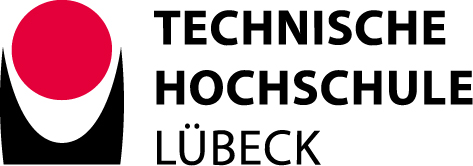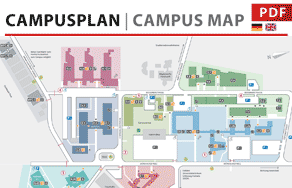Research Laboratory of Functional Nanomaterials for Renewable Energy Generation and Photonics
At the time of its construction in 1982 the Solar House of Technische Hochschule Lübeck was one of the first of its kind in Germany. The goal of this passive solar building was to prove that a single-family house can become energetically self-sufficient using solar energy only. Since then, the building has become a “real-life” laboratory in which different approaches to renewable energy generation can be examined under realistic conditions.
Since 2017, the Solar House also hosts the laboratory of functional nanomaterials of Prof. Nadine Buczek.
Furthermore, the house features an advanced meteorological observation station, see below, and student labs.
- Meteorological station of the Solar House at TH Lübeck
The first meteorological station of the Solar House at TH Lübeck was put into operation in 1985 and was substantially extended in 1993 and 2021.
The special focus of the station are the measurements of solar radiation usable for the photovoltaic energy conversion. These observations are automatically and continuously performed using an array of advanced pyranometers (yielding and solar radiation flux density) oriented along different directions of the sky. The data allows the realistic calculation of the expected average photovoltaic energy yield in the area of the northern German Baltic coast. Further parameters like air temperature, humidity, and pressure, wind strength and direction, sky coverage, visibility, and precipitation are constantly monitored as well.
The data has been recorded since 1985. Recent measurements are made available to the public through https://wetter.th-luebeck.de. Long-term observations are provided to interested research groups on request. With the new computer control system in operation, the data availability of weather station exceeds 99%.
The picture below shows a part of the weather sensor array of the Solar House. Visible are the multi-pyranometers and the anemometer (for wind speed measurements) combined with the wind vane.

The sensors in the array feature serial digital interfaces allowing automated data acquisition. They are connected to the central control computer using the PROFIBUS (RS-485) and provide the meteorological data with 1Hz rate.
The data is averaged over five-minute intervals and stored locally on the control computer as well as in a dedicated SQL database hosted at the university.
Messkanal | Bedeutung | Einheit | Messbereich | Maximalfehler |
|
|
|
|
|
Gn00 | Solarstrahlung Horizontal | W⁄m2 | 0…1200 | 11,3 |
Gn30 | Solarstrahlung 30 °-Süd | W⁄m2 | 0…1200 | 11,6 |
Gn60 | Solarstrahlung 60°-Süd | W⁄m2 | 0…1200 | 11,6 |
Gn90 | Solarstrahlung 90°-Süd | W⁄m2 | 0…1200 | 11,6 |
Gdir | Direkte Sonnenstrahlung | W⁄m2 | 0…1000 | 50 |
Tauss | Außentemperatur | °C | -20…40 | 0,2 |
Vw | Windgeschwindigkeit | m/s | 0,5…35 | 0,5 |
Rw | Windrichtung | ° | 0…360 | 1 |
Frel | Relative Luftfeuchtigkeit | % | 0…100 | 1 |
Pluft | Luftdruck | hpa | 800…1200 | 2 |
- Photovoltaic laboratory
The research laboratory supports the fabrication and characterization of photovoltaic materials and devices. It also offers teaching services and topics for student thesis.
Available Equipment:
o Laboratory solar simulator from G2Voptics allowing:
(i) the electrical characterization of solar cells with varying light intensity and cell temperature
(ii) measurement of the external quantum efficiency of the systems (spectral sensitivity)
Solar simulators allow to perform reproducible characterization of the cells independent from diurnal, annual, geographical- and weather-related changes of the sun irradiation at the Earth’s surface.

o External measurement facility for field trials of photovoltaic devices for long-time measurements under real conditions.
The photovoltaic yield of the devices depends strongly on the real conditions they are operated at. To this end, the measured performance is related to the meteorological parameters obtained from in-house operated weather station [LINK NACH OBEN], in particular the solar irradiation, humidity, and temperature. The measurements allow to refine models for the optimal orientation of the cells in this particular region of Germany, taking into account the actual long-term relationship between direct and diffused sunlight. Furthermore, altering processes in the cell can be reliably investigated.

o Environmental chambers run in collaboration with the MPA Schleswig-Holstein
The chambers allow the evaluation of the performance and the degradation of the cells under controlled laboratory conditions, at elevated temperatures and high humidity.
o Preparation of photovoltaic devices
An automated line for highly reproducible preparation of organic solar cells is currently under construction.
o Software
The T*Sol und PV*Sol programs of the software provider Valentin allow for the optimized dimensioning of solar collectors and cells for private and corporate buildings.These provide a selection of basic system configurations that can be adapted to the required needs and respective conditions by changing individual parameters (such as size, orientation, local solar irradiance, buffer volumes, control modes) and can be reliably included in the simulation.
- Thermoelectric Laboratory
o Temperature dependent measurements of the Seebeck coefficient and electric conductivity of bulk and ultrathin films
o 3Ω-method measurement facility for the determination of thermal conductivity of the samples
(The two methods above allow the determination of the thermoelectric figure of merit.)
o Numerical simulation of thermoelectric modules for the optimization of geometry and components
o Computer-based quantum simulations using density functional theory for the determination of thermoelectric properties from first principles



